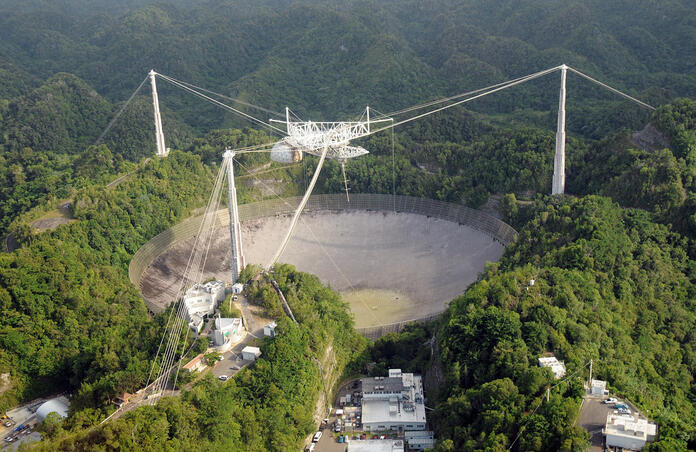Arecibo, the world's largest radio telescope, will close forever

After 57 years of good and loyal service, the Puerto Rican observatory at Arecibo is set to be decommissioned.
Most famous for its appearance in the 1995 James Bond “GoldenEye” movie, it’s also known for detecting an alien radio signal in the 1997 film “Contact”. This is closer to its actual function “in real life”, as this telescope has indeed been used by the SETI program (Search for Extra-Terrestrial Intelligence). At the same time, it has sent a message towards the globular cluster M31, 25 000 light years away, in the hope that alien astronomers are searching for life elsewhere in the Universe just like us – since it was sent in 1974, we will have to wait until at least the year 51 974 for an answer. Other, more present-day achievements include the discovery of a three-asteroid system in 2008, radar observation of Mercury which confirmed a theory about its librations (an oscillation phenomenon), and many more which you can read about here.
The telescope’s location in Puerto Rico close to the equator has the notable advantage of enabling the observation of Solar System Planets for longer periods of their orbits, however it has also been problematic, especially over the last decade: the increasingly violent storms and hurricanes have caused a lot of damage to the telescope. The first significant damage happened with hurricane Maria in 2017, notably 30 aluminium panels were broken. What made the news this year is an incident that occurred in August, when a cable snapped, again causing damage to the aluminium panels. On the 6th November, another cable became loose which had disastrous effects on both the dish and the tower to which the cable was attached.
Some of those cables are over 30 years old, and the evaluations by engineers over the past two weeks have not been positive: due to all the obsolete components, the entire structure could collapse, either on the dish itself or on surrounding building like the visitor. Trying to conduct repairs, which are not guaranteed to work, may further risk workers’ lives, so the main funder, the US National Science Foundation, took the safe decision to de-assemble the Arecibo telescope, although they will attempt to keep the facilities for upcoming teaching and research.

Anyway, in 2016, the 305-m in diameter Arecibo telescope was surpassed in size by the Chinese Five-hundred-meter Aperture Spherical Telescope (FAST), which is used to observe pulsars, quasars and other distant objects emitting radio waves, but is also involved with SETI to detect potential extra-terrestrial communication, so the search goes on!
Cover image: The Arecibo Telescope, University of Central Floriday
Image credit:
1- The Arecibo Message, Wikimedia Commons
2- A view beneath the Arecibo radio telescope dish, University of Central Florida
